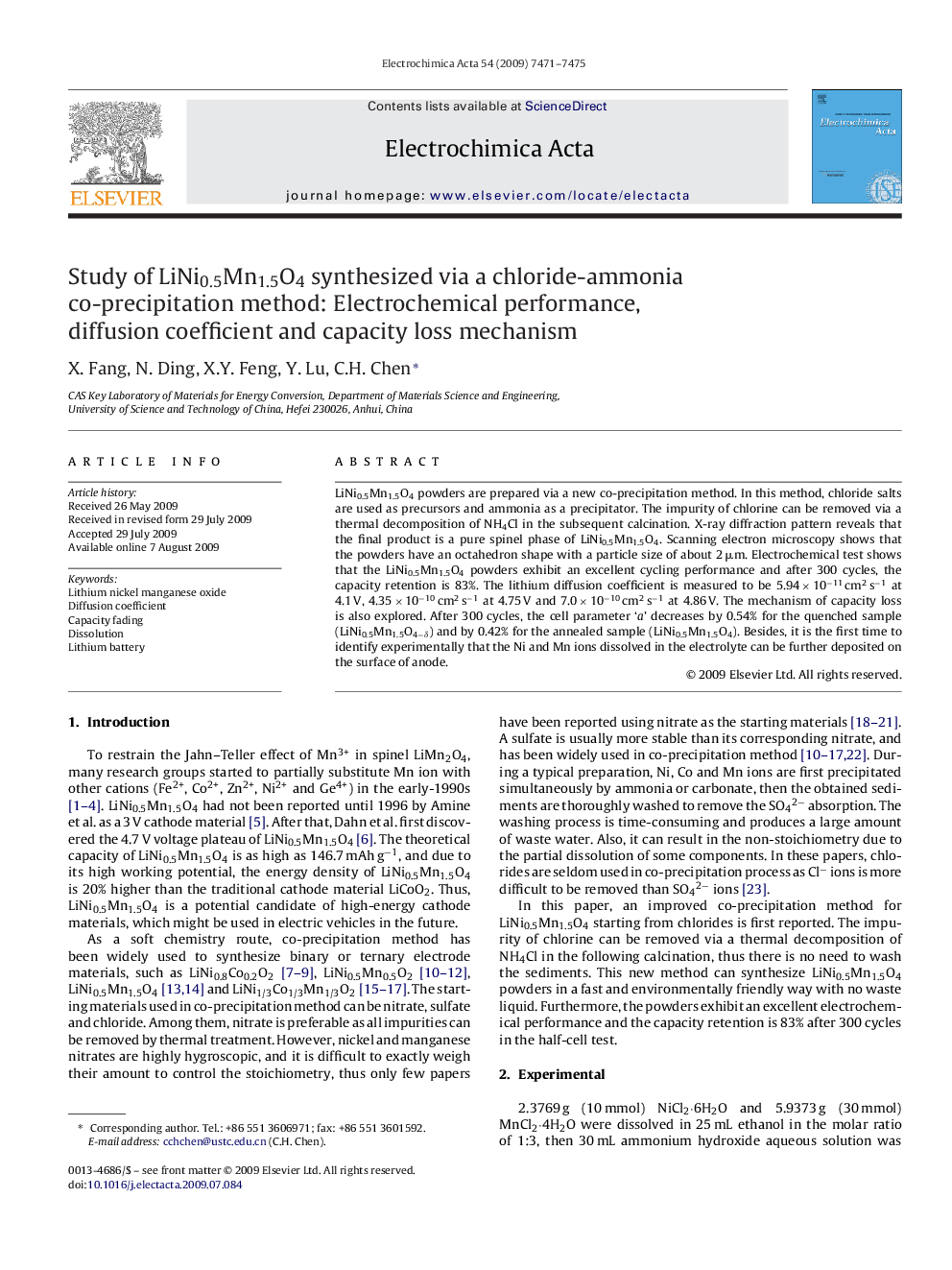| Article ID | Journal | Published Year | Pages | File Type |
|---|---|---|---|---|
| 191952 | Electrochimica Acta | 2009 | 5 Pages |
LiNi0.5Mn1.5O4 powders are prepared via a new co-precipitation method. In this method, chloride salts are used as precursors and ammonia as a precipitator. The impurity of chlorine can be removed via a thermal decomposition of NH4Cl in the subsequent calcination. X-ray diffraction pattern reveals that the final product is a pure spinel phase of LiNi0.5Mn1.5O4. Scanning electron microscopy shows that the powders have an octahedron shape with a particle size of about 2 μm. Electrochemical test shows that the LiNi0.5Mn1.5O4 powders exhibit an excellent cycling performance and after 300 cycles, the capacity retention is 83%. The lithium diffusion coefficient is measured to be 5.94 × 10−11 cm2 s−1 at 4.1 V, 4.35 × 10−10 cm2 s−1 at 4.75 V and 7.0 × 10−10 cm2 s−1 at 4.86 V. The mechanism of capacity loss is also explored. After 300 cycles, the cell parameter ‘a’ decreases by 0.54% for the quenched sample (LiNi0.5Mn1.5O4−δ) and by 0.42% for the annealed sample (LiNi0.5Mn1.5O4). Besides, it is the first time to identify experimentally that the Ni and Mn ions dissolved in the electrolyte can be further deposited on the surface of anode.
